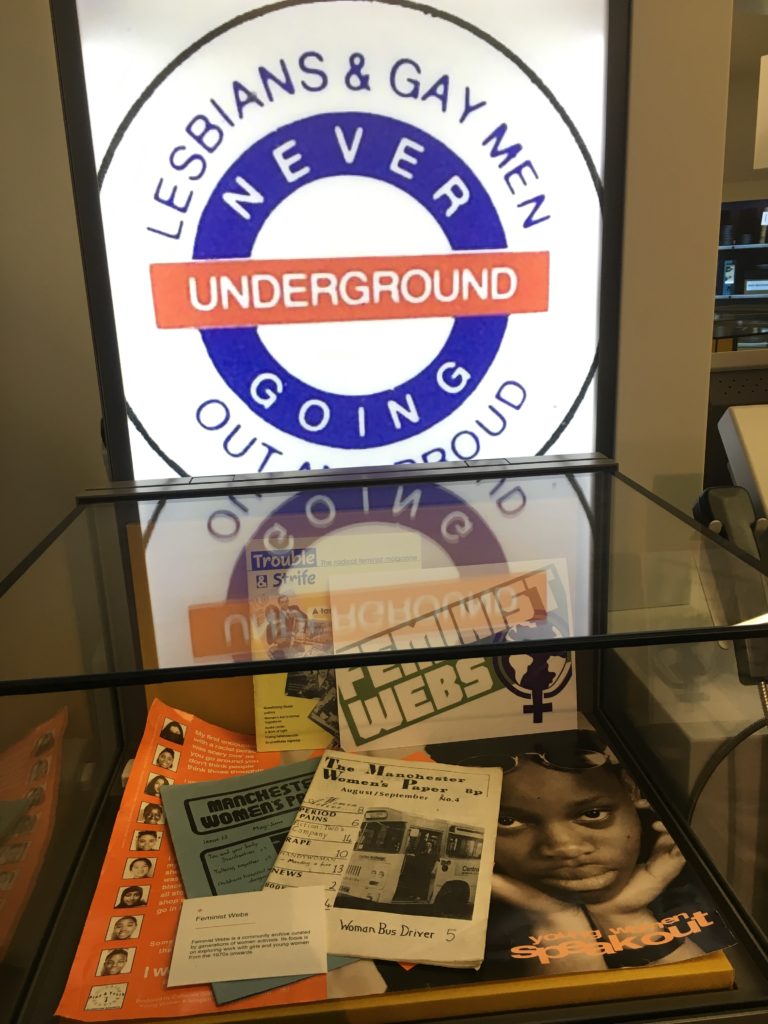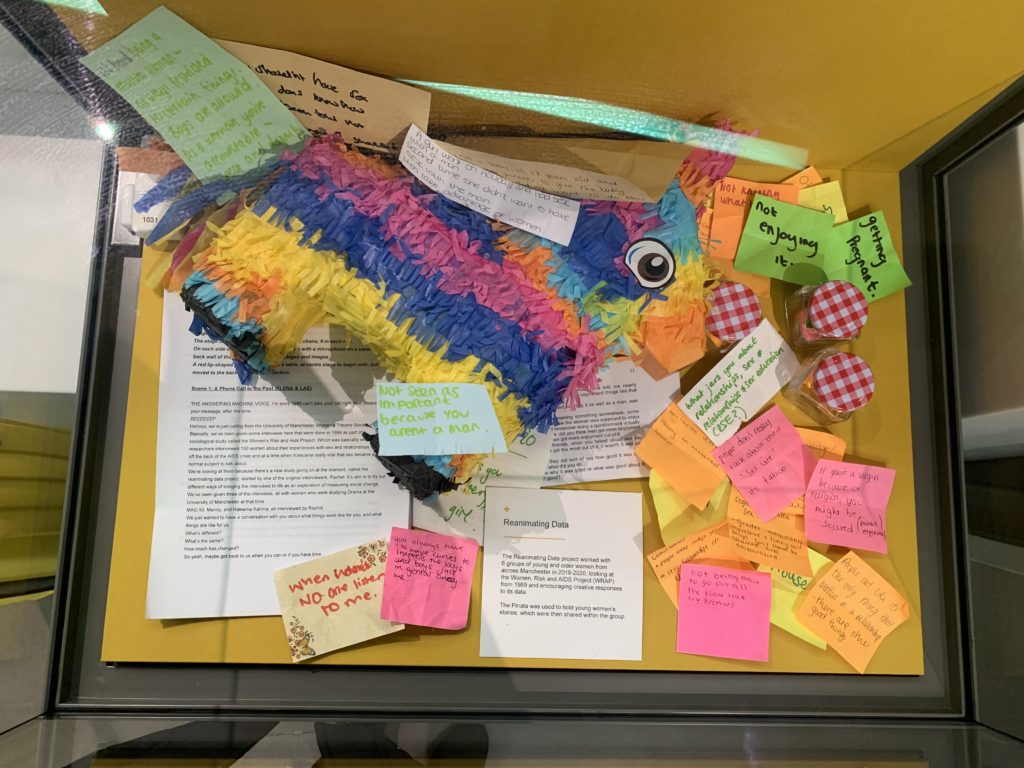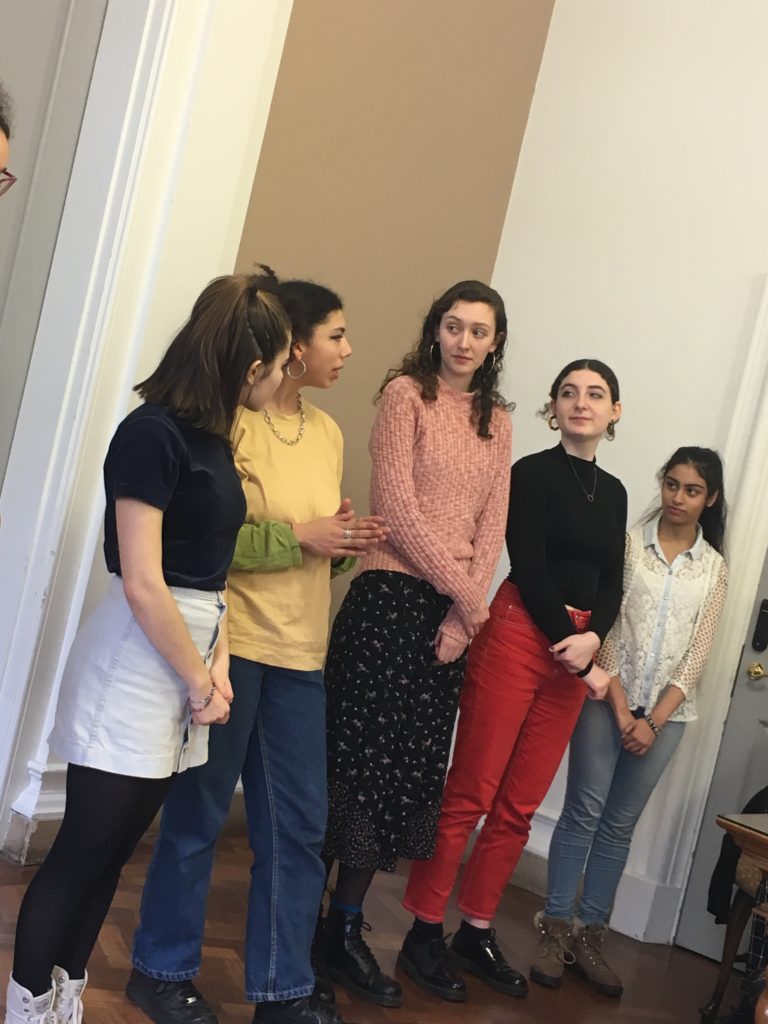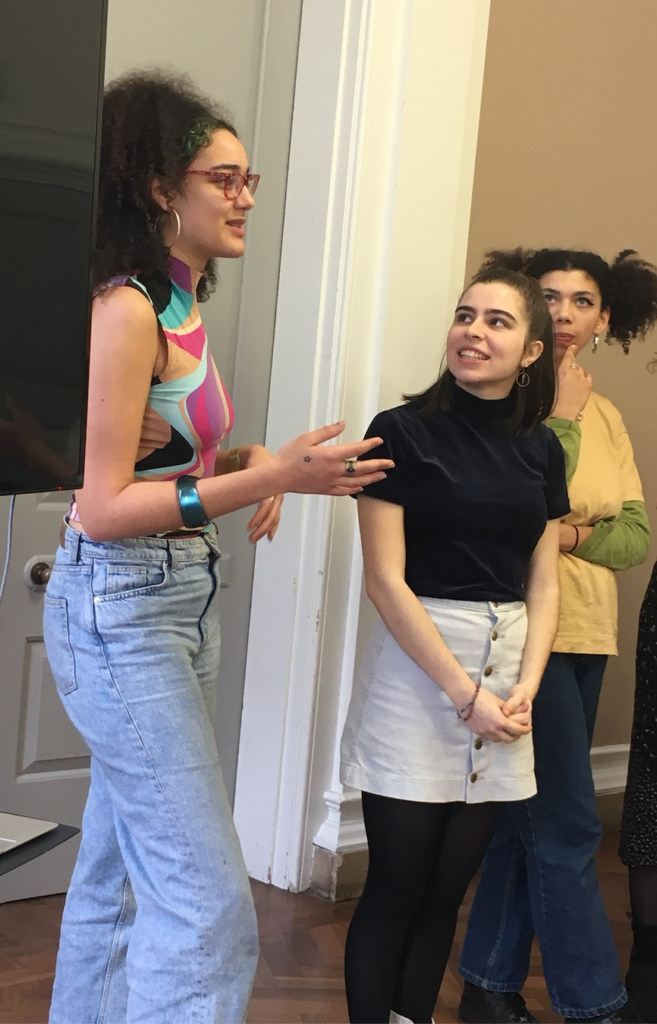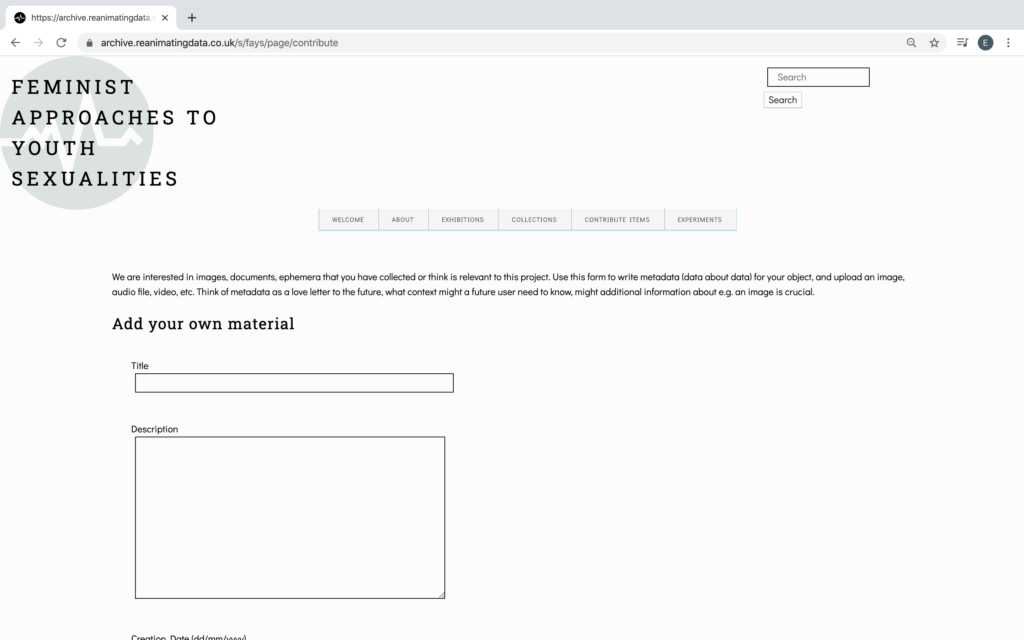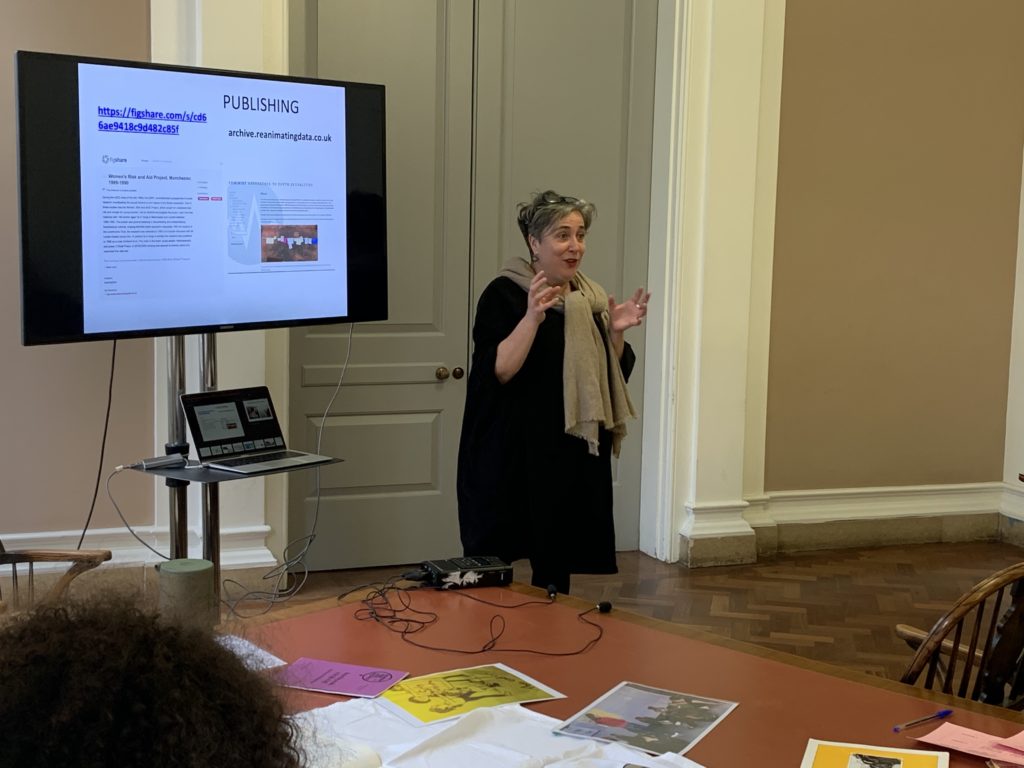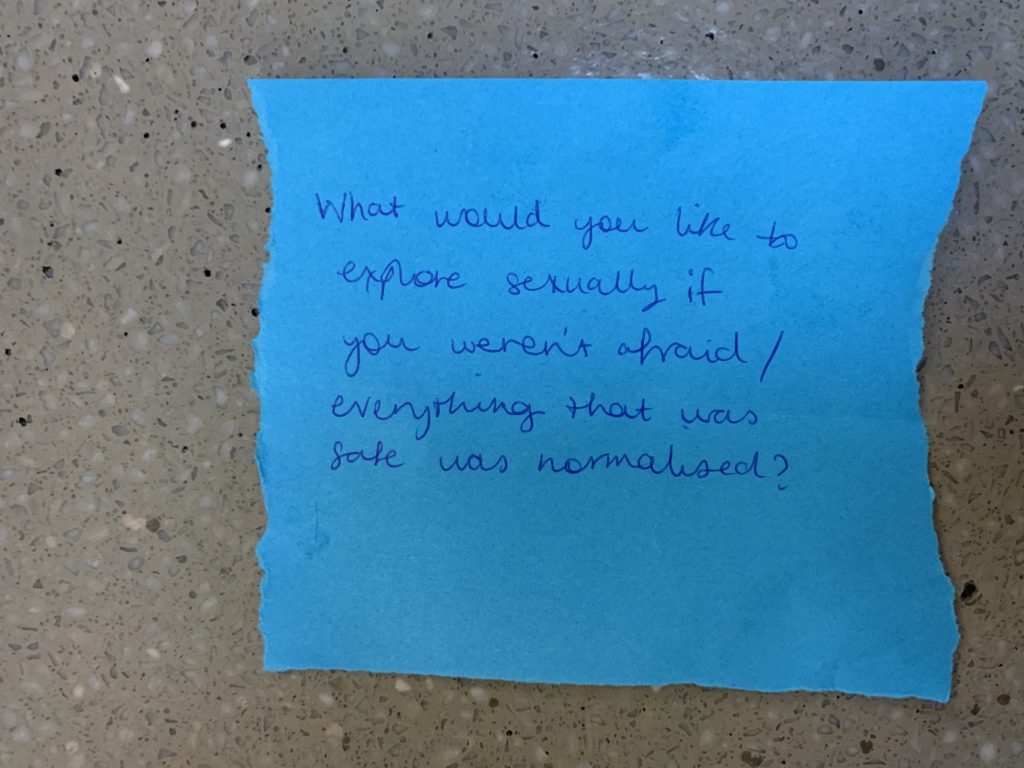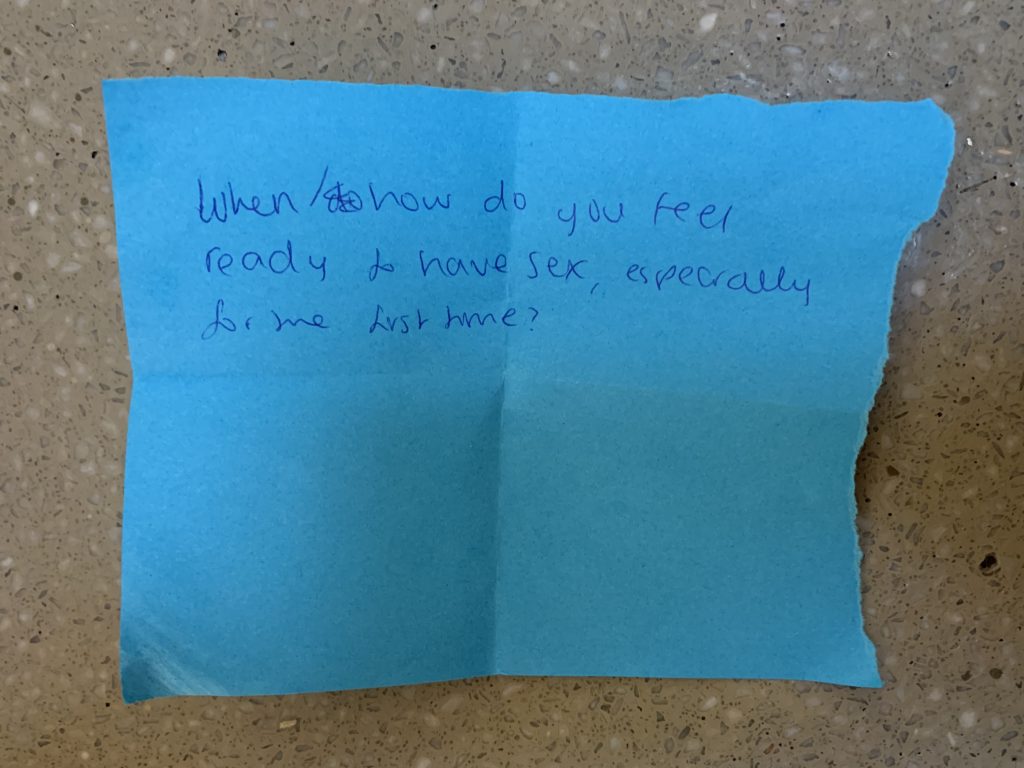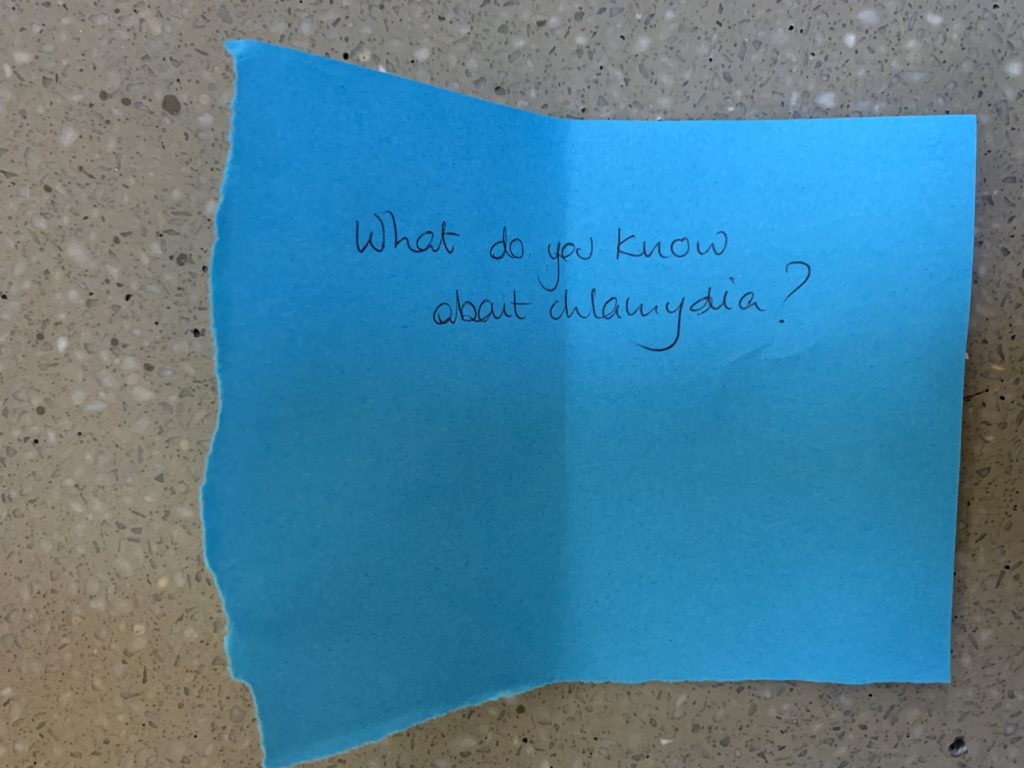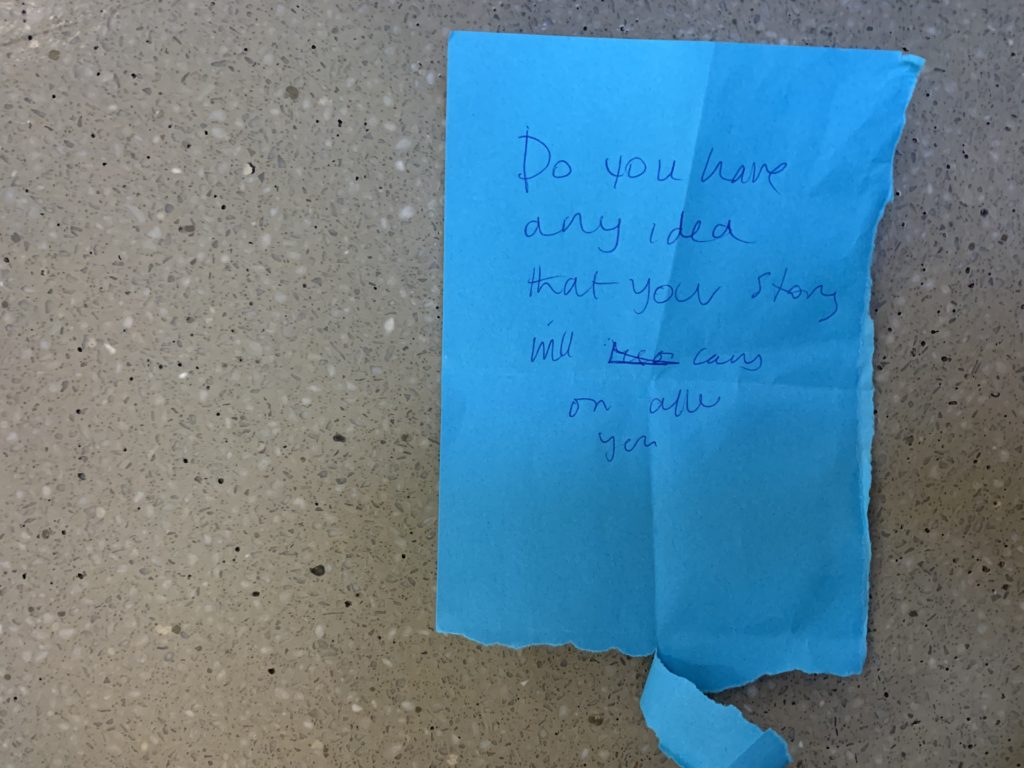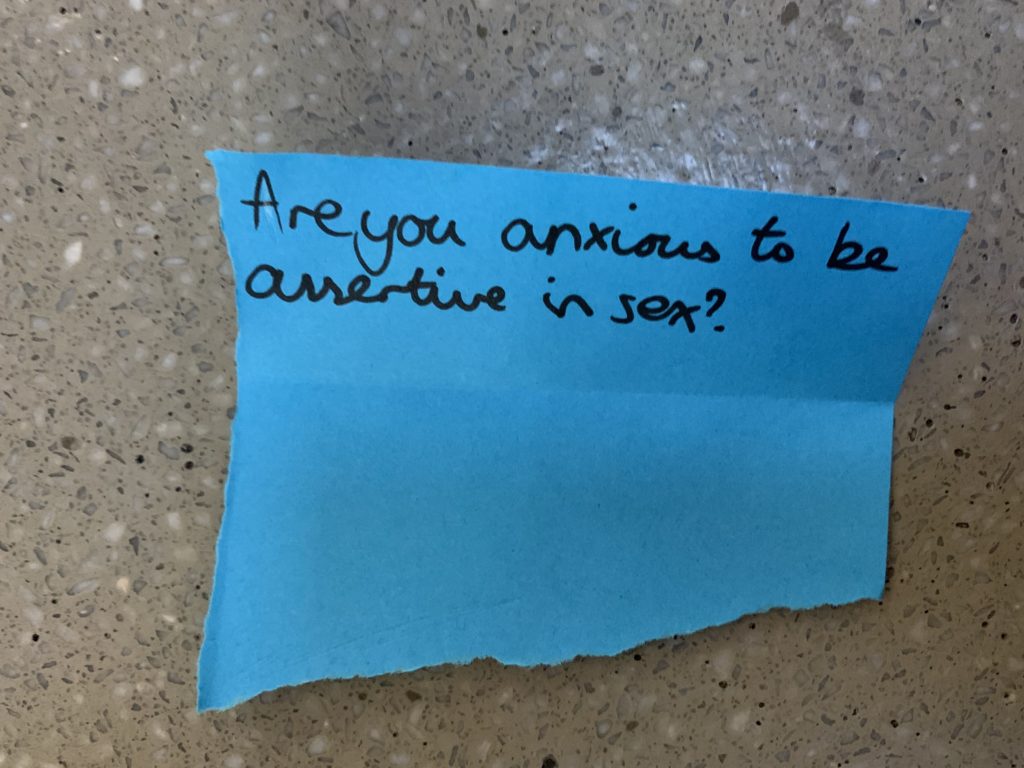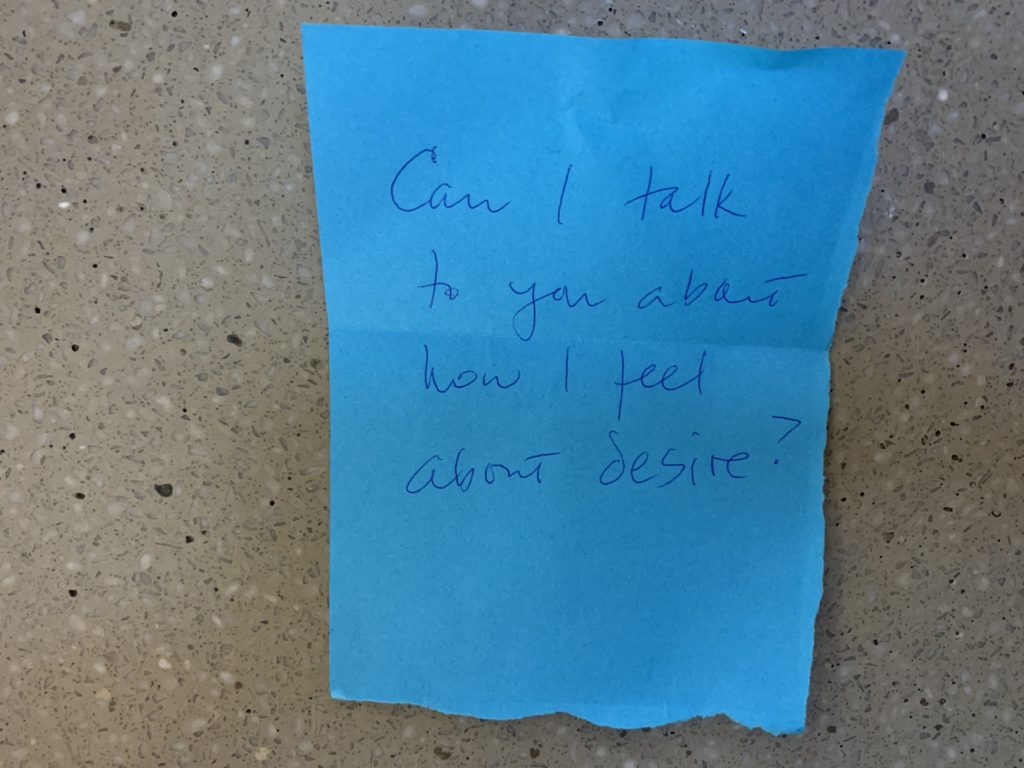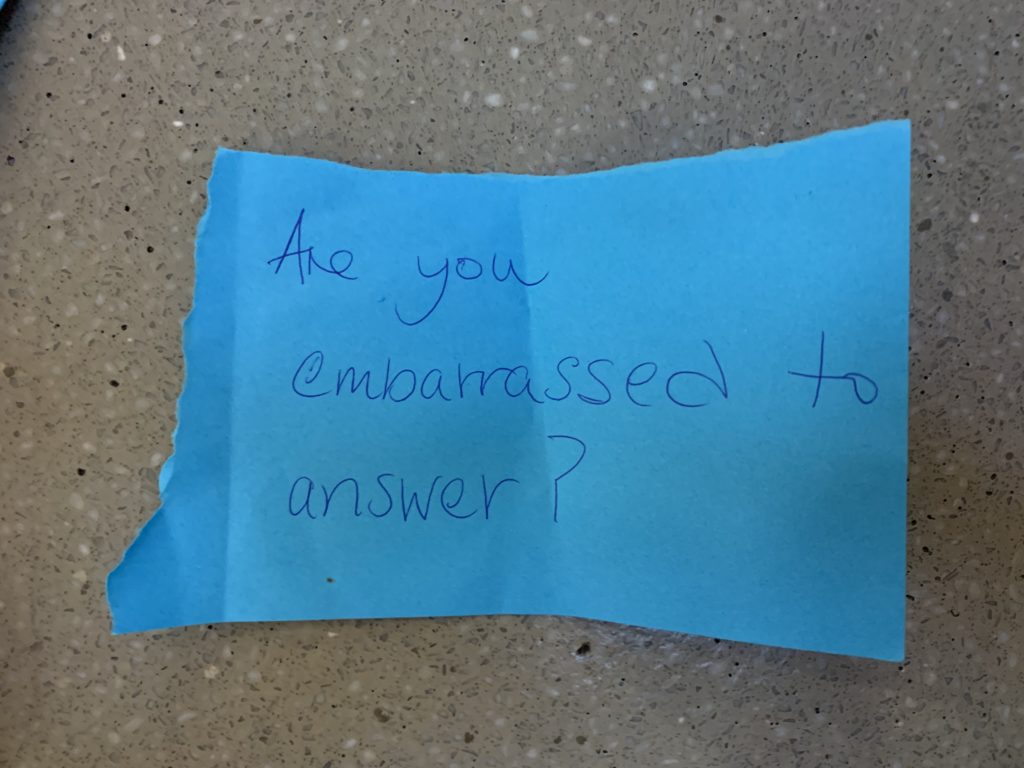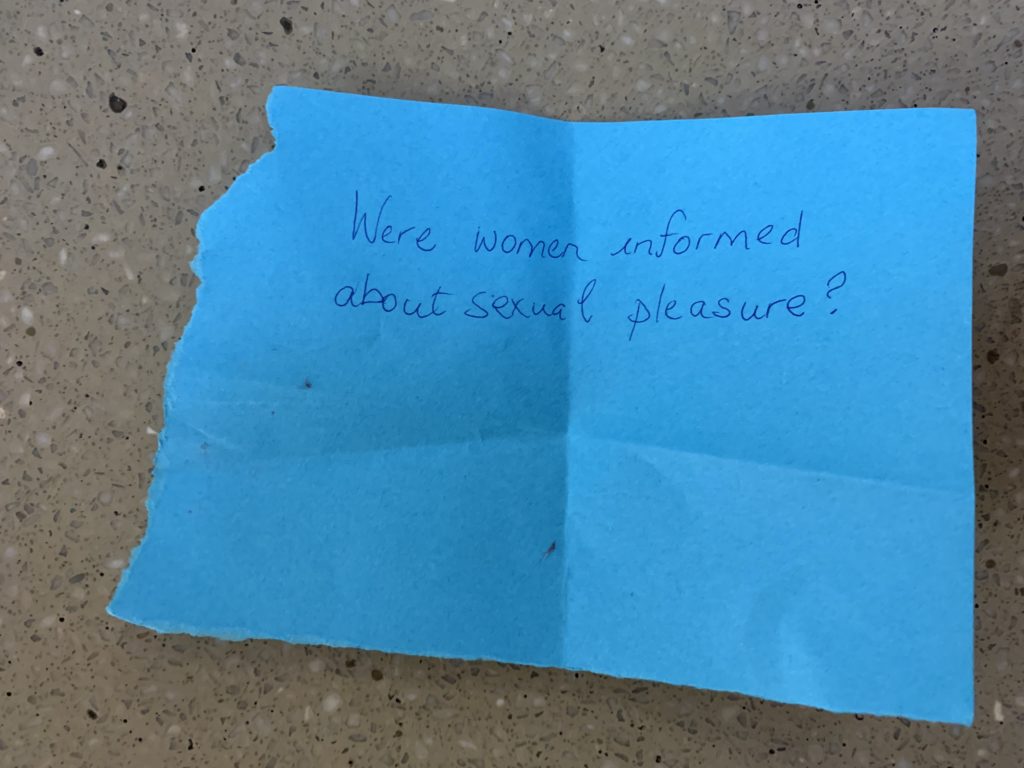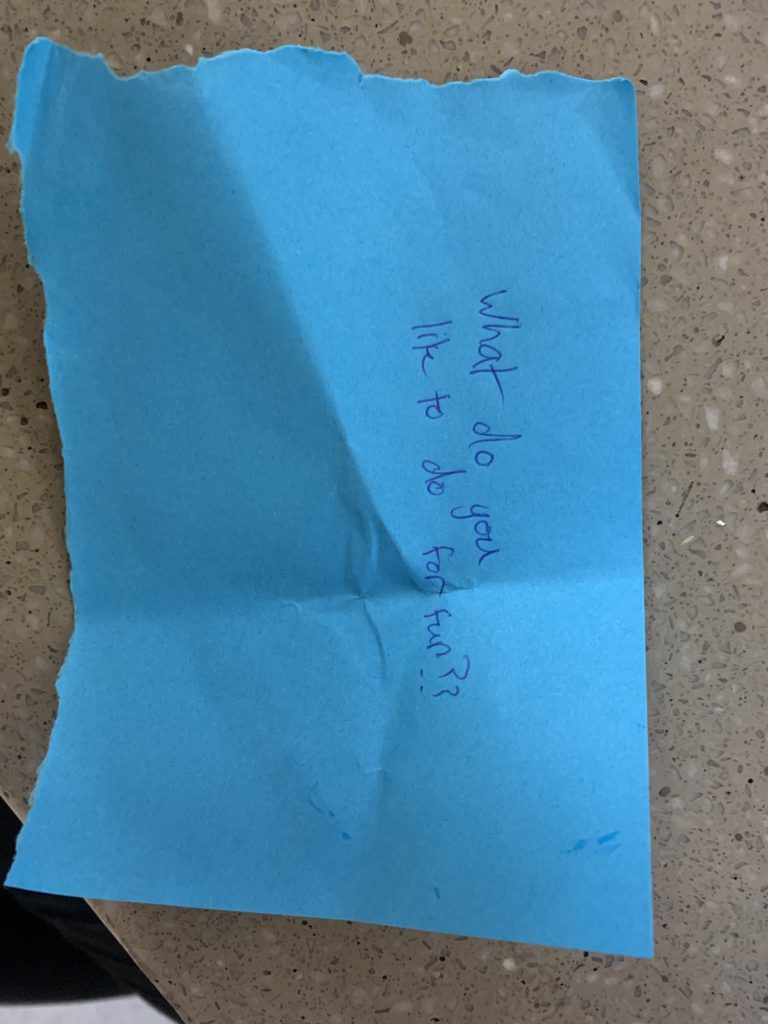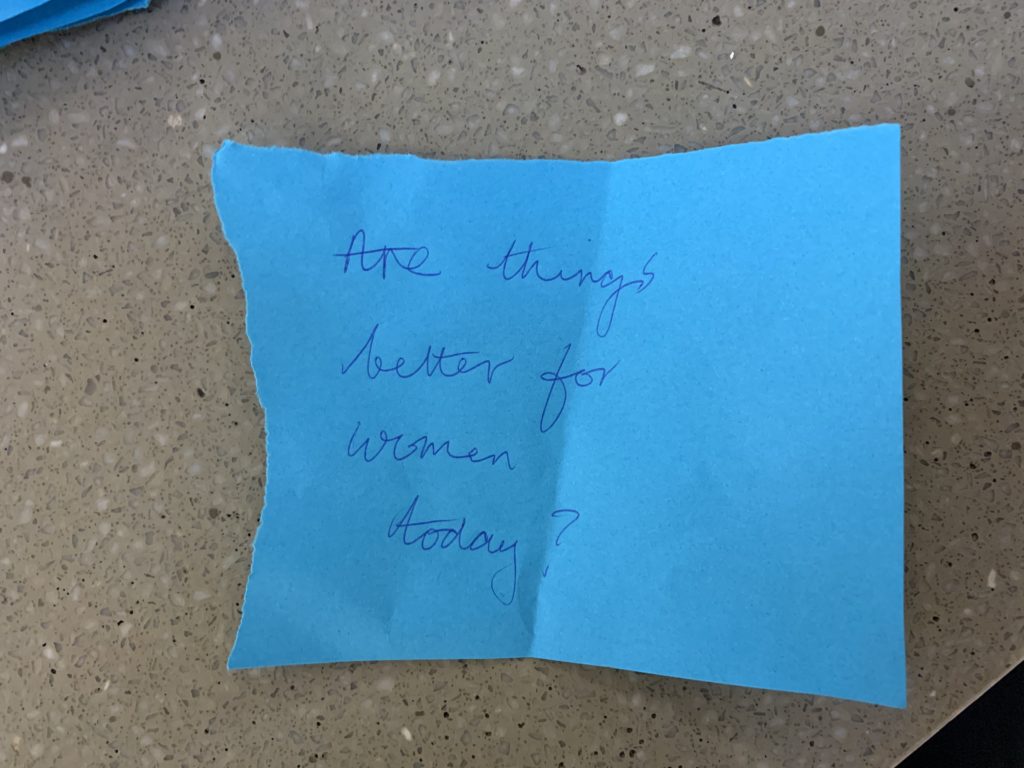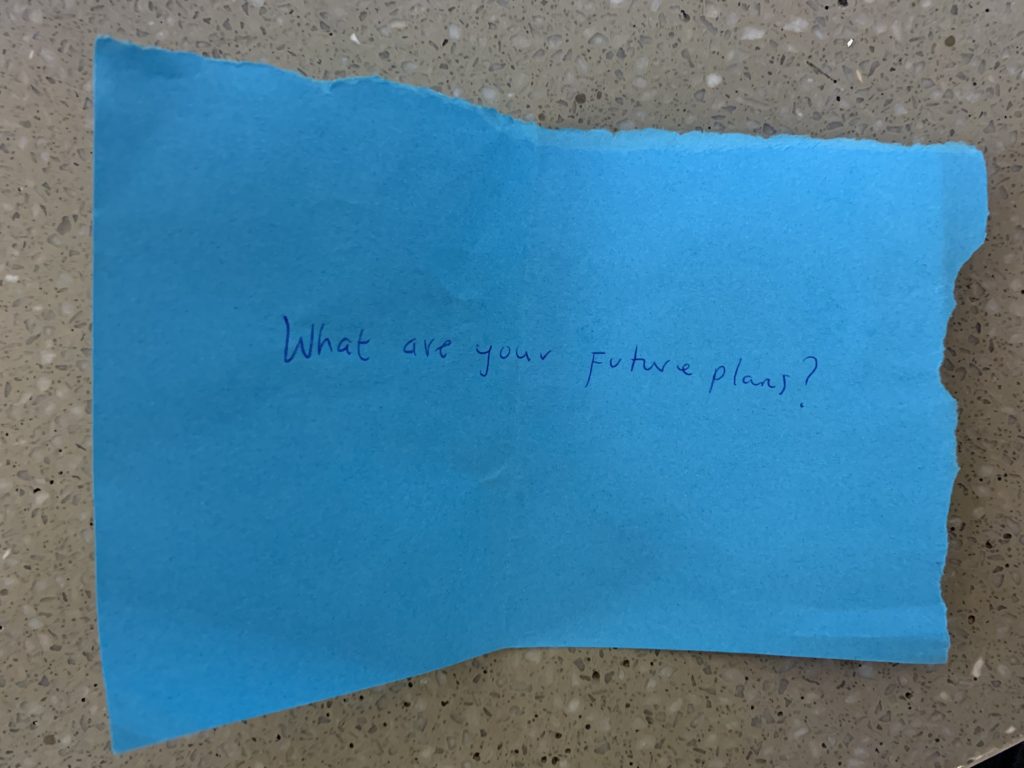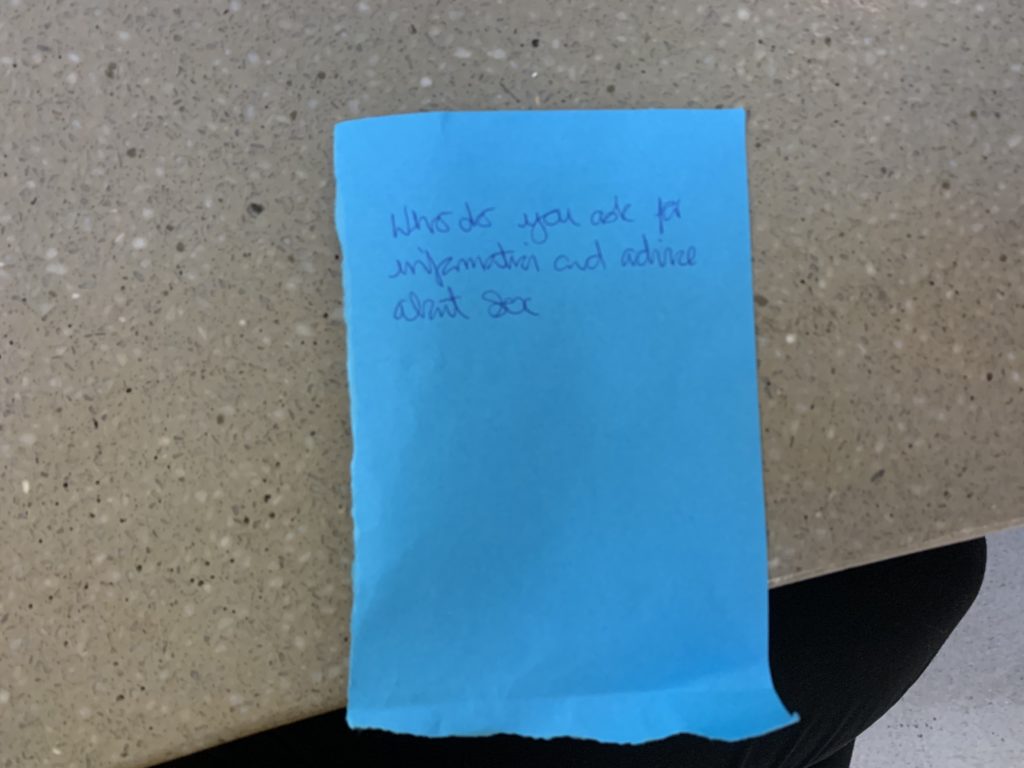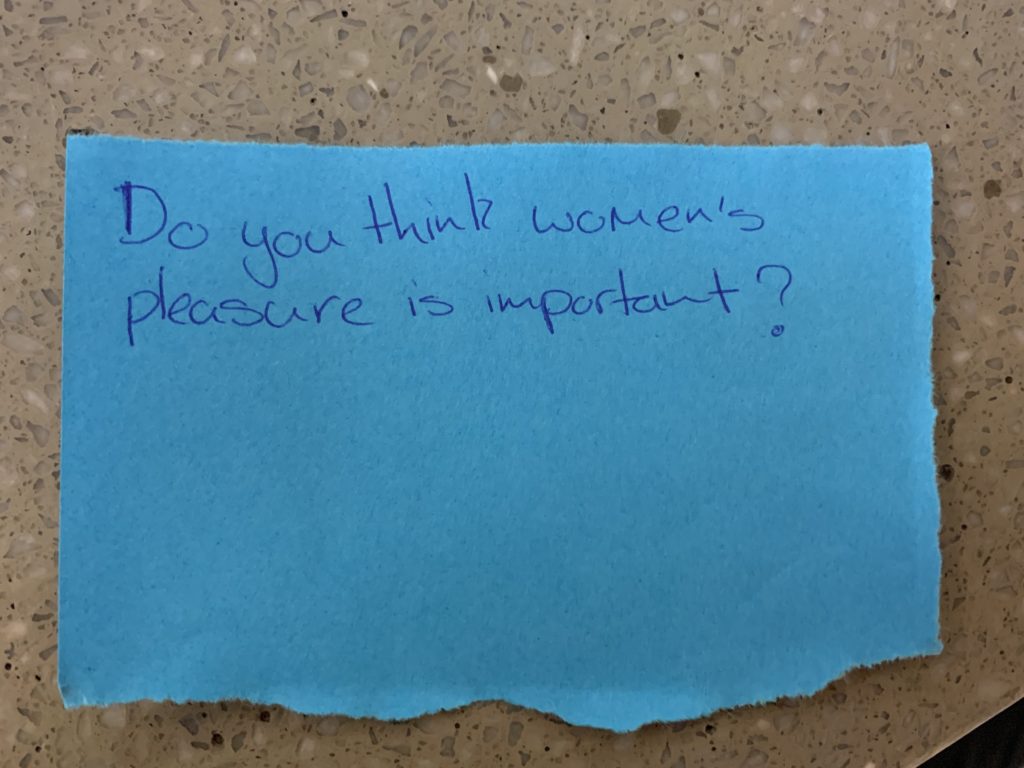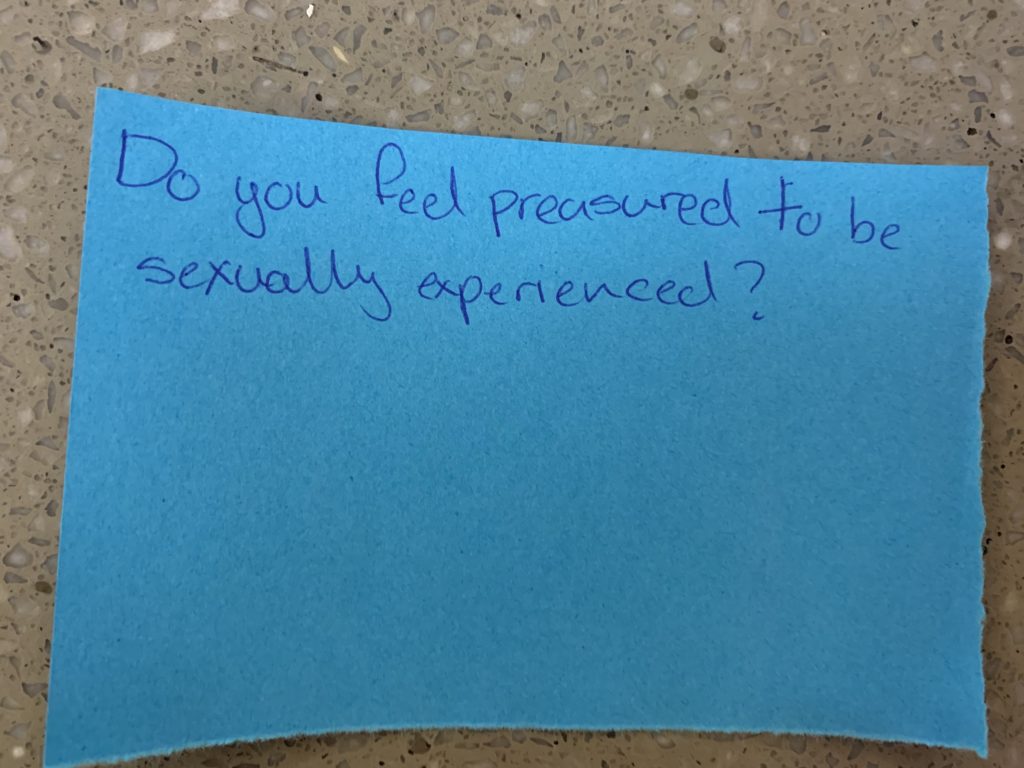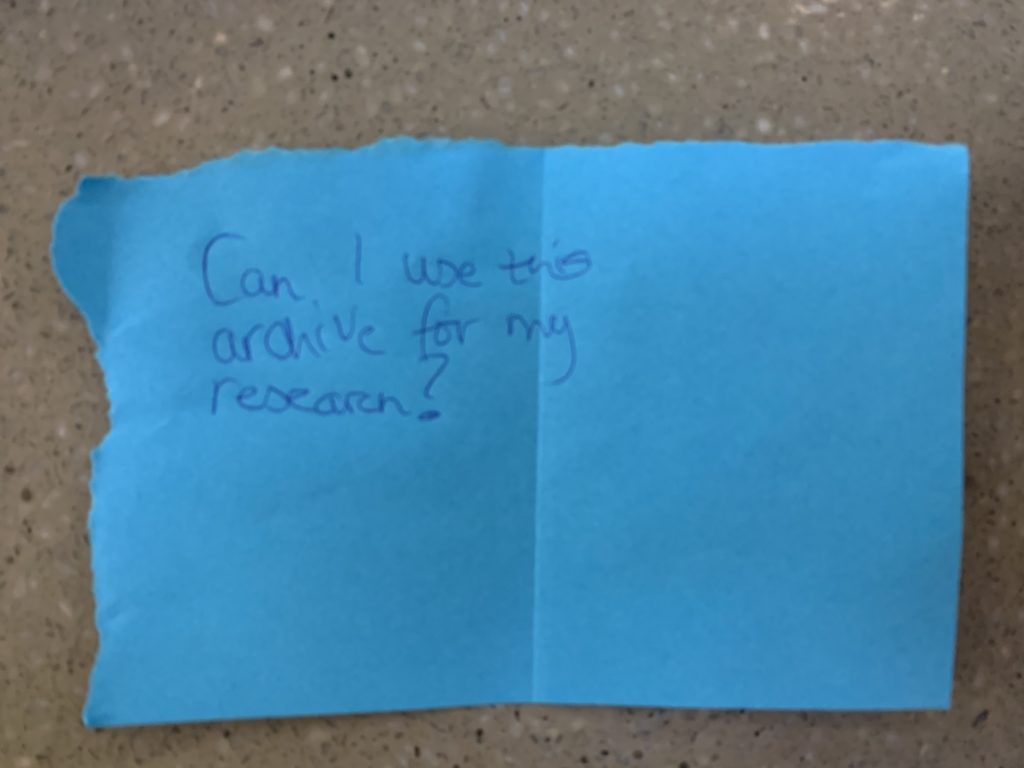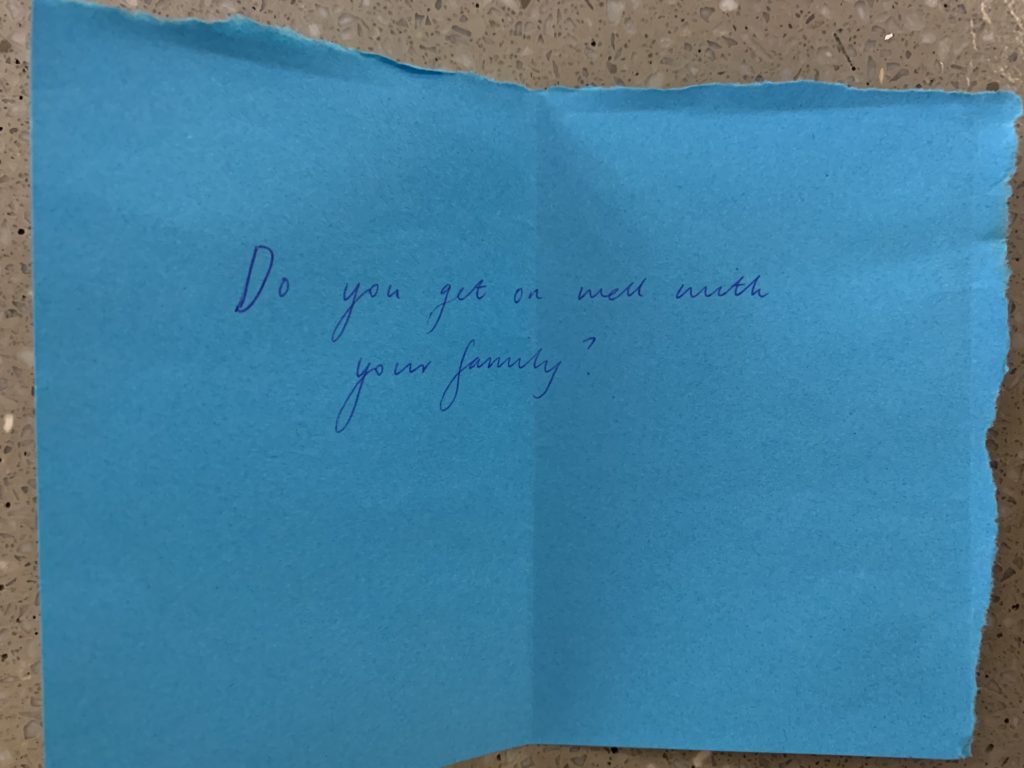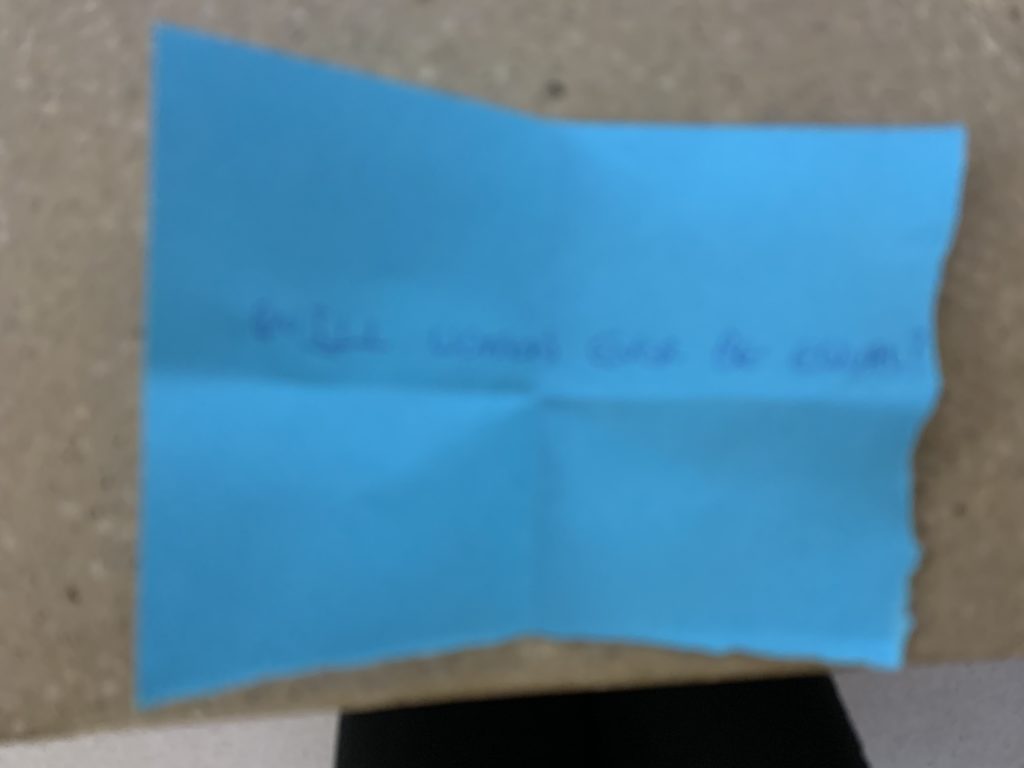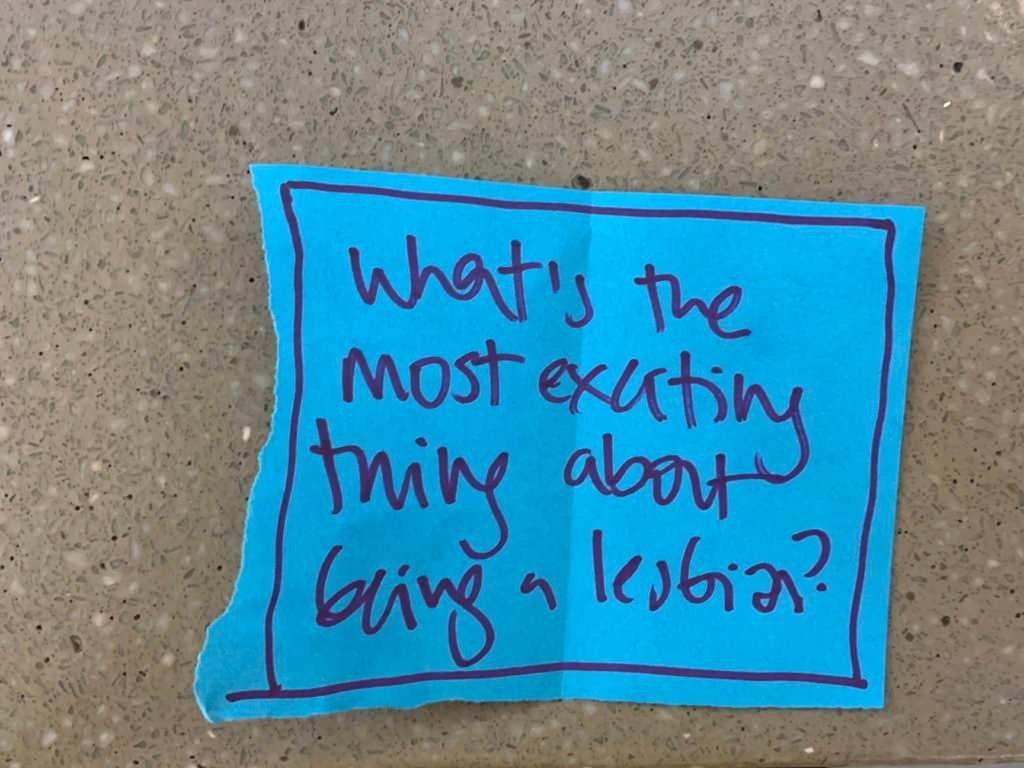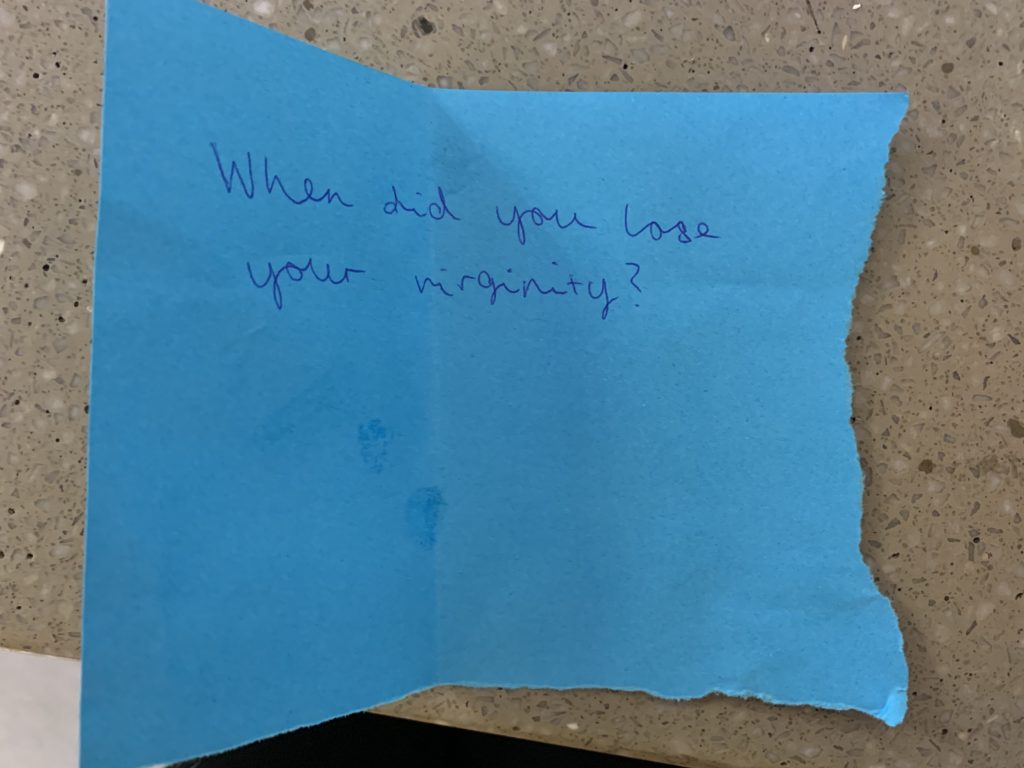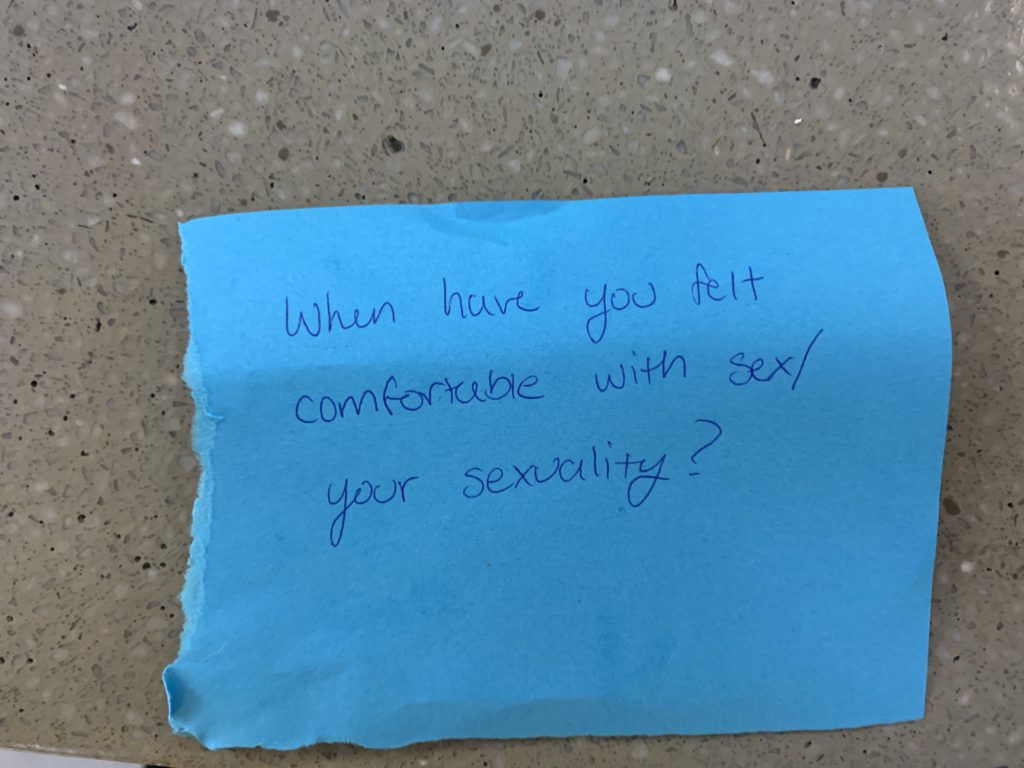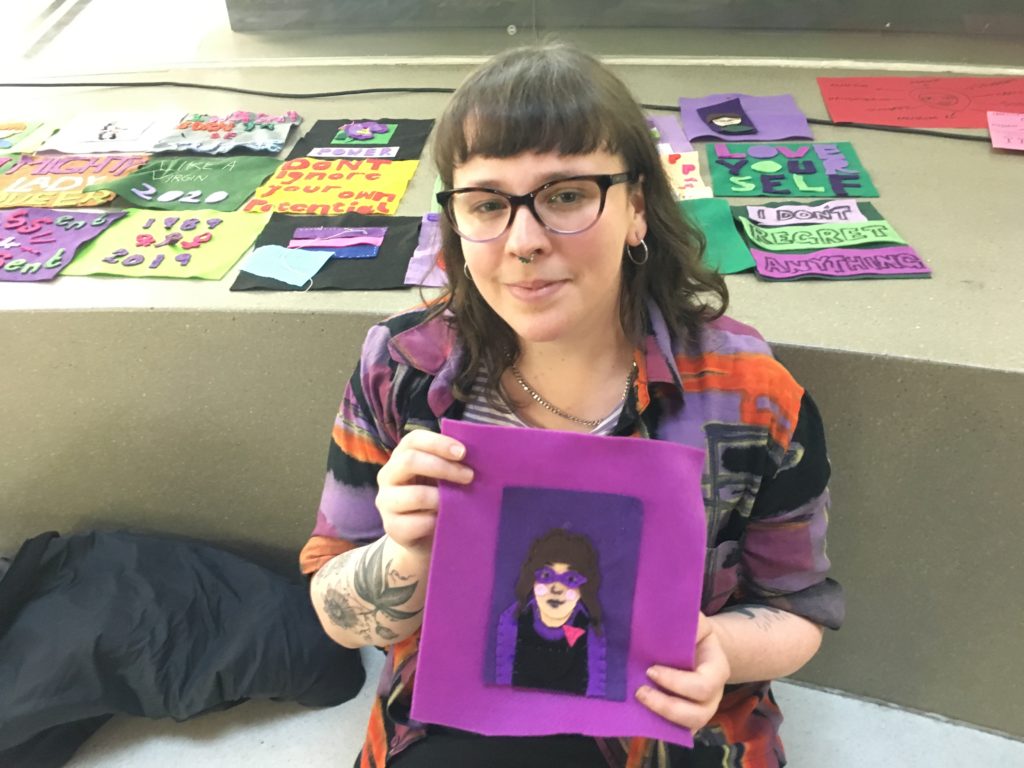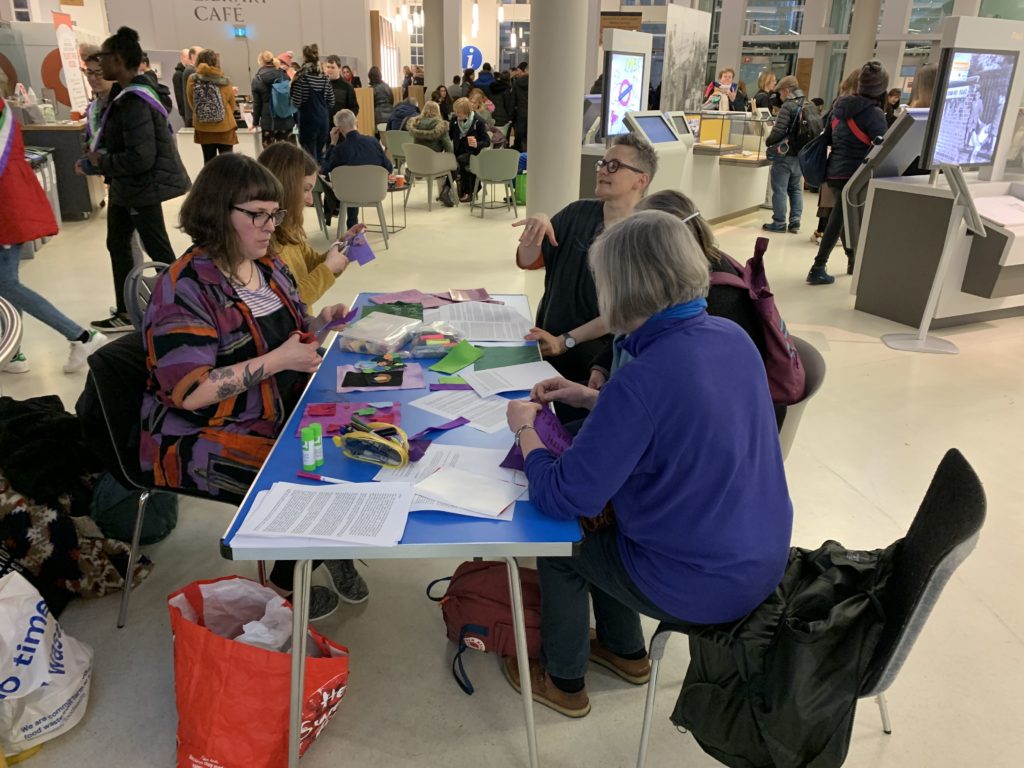It was only 3 weeks ago, but it seems like another life-time already – a reminder of how the arrival of a new, untreatable virus can change the world.
The Reanimating data team travelled one last time to Manchester on the evening of March 6th in order to prepare for our finale event at the Library. We had sent ahead some of the physical documentation of the project to be housed in the vitrines of the archives plus section of the library: the original WRAP questionnaires, pamphlets and some data; feminist youth work posters and magazines from 1989 taken from the Feminist Webs collection and examples from our different youth work projects in Manchester which during the last 9 months have ‘reanimated’ the WRAP data. It was exciting to see these materials behind glass and preserved as history.
We then went upstairs to get our meeting room ready – spreading banners, craft materials, and ephemera from 1989 around the room. We had a playlist with some musical highlights and we waited to see who would turn up.
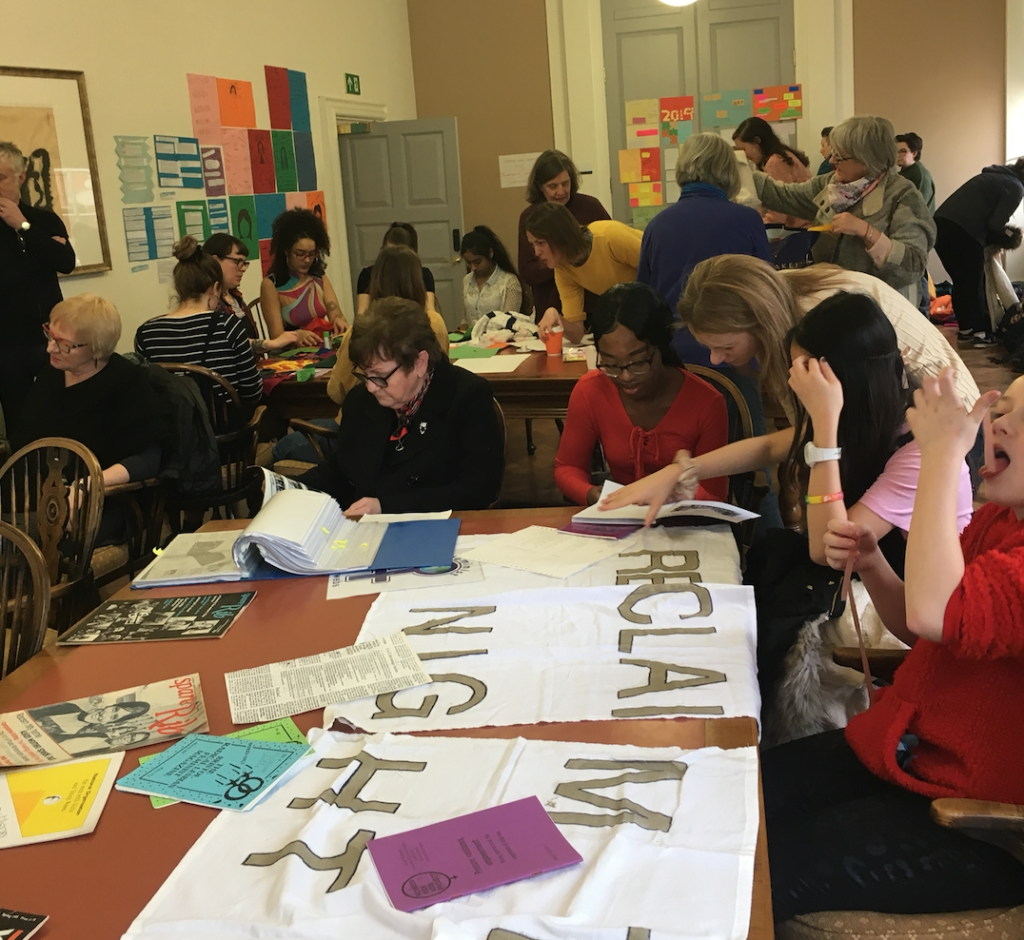
Before long we had a room full to bursting. Young people from all the different youth groups were there. Our critical friends. The original researchers and new generation researchers working with the materials. Youth workers and sexual health workers from across the city and the lifecourse. We all got to know each other by playing human bingo – looking for members of the original research team, a youth worker, a member of a youth projects.
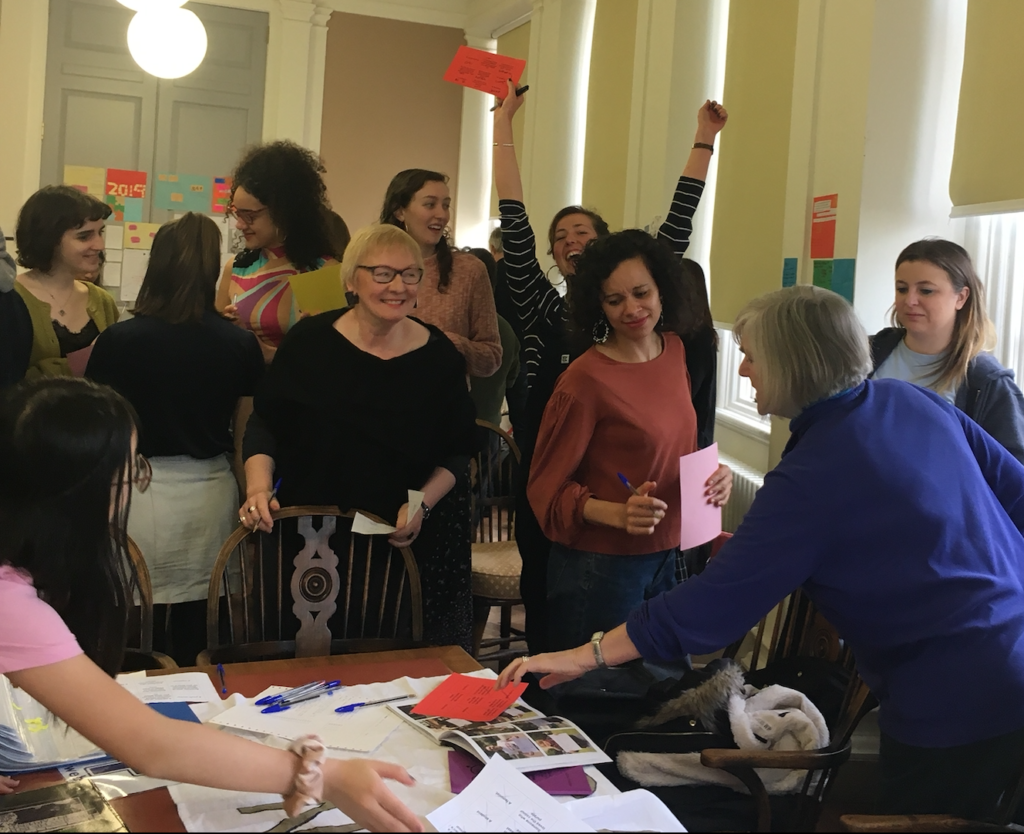
Niamh Moore opened the workshop by welcoming participants and explaining how the old WRAP project links to the new RAD project. We began the day by sharing the film that Sue Reddish and Jim Dalziel have made explaining what it means to ‘reanimate data’ and capturing the different youth work projects in Manchester. Huge thanks to Sue and Jim for documenting the work and helping us make sense of it all.
After this young people from each of the projects then had the opportunity of talking about their experience of the project – sharing what they had done with the data, what they learned and what surprised them. We started with Emma Okomoh from the Levenshulme Youth Project who showed and talked about the short animated film that she had made working with one of the WRAP interviews, noting how important it is to find someone you can identify with in the material as a starting point for connection. Emma had been supported in this by Paula Carley and Siobhan O’Connor and Marianna Vareli, the lead youth worker for the Levenshulme girls group.
Next youth worker and artist Hebe Phillips and young people from one of the Proud Trust ‘s LGBT young women’s groups talked about their work with the ‘purple pamphlets’ and how they had used music to try and get a taste of the 1980s. The group were uncertain whether any of the original interviewees had identified as lesbian or bisexual and in their work on the project had tried to read between the lines of the interviews. They also had a go at asking some of the questions posed on the interviews of themselves as a way of filling the gap. This group’s creative work developed into the creation of self portrait squares that capture their identities as this is what they came to realise was happening in the original interviews as each WRAP participant was invited to tell her story. The making of squares was opened up to participants on the day and in the library after the event. These squares will be stitched together by textile artist and youth worker Hebe Phillips to make a banner that celebrates the voices of young women and takes their stories into the future.
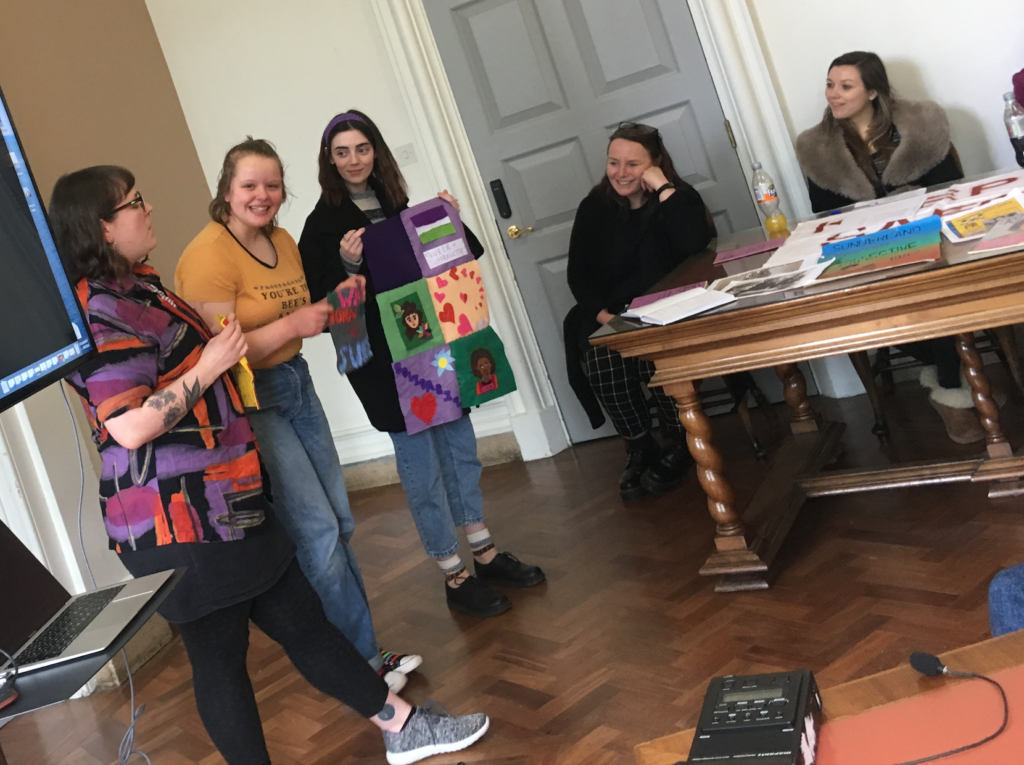
The best thing about the data for this group was the lack of subtlety of the interviews making it possible to talk explicitly about sexual practise and feelings. What surprised one of the young women, Bethan, was how little has changed in terms of formal sex education despite big shifts within the culture towards openness. Answering the question of how they had learned about sex the young women at the Proud trust were surprised to find that their answers were very close to those of young women in Manchester thirty years earlier.
Young people from the Women’s Theatre Society talked about how they had worked with the interview material since September, using drama exercises and bringing it to life in different ways and in the process creating a show that included skits, extracts, and personal testimonies inspired by reading the stories of others. Again, the directness of the original questions were valued, even if they had been surprising and transgressive at the start. By working with these direct questions the group found themselves having conversations that they would not otherwise have had, making themselves vulnerable and naming experiences in such a way that they were able to identify with each other and with an audience. The positive reception that the show received had taken them aback, being so wrapped up in what the process has given them the young women were surprised and moved to realise that this process would continue with the audience who also identified with and responded to the authenticity of the material, feeling that they had been understood through the story of another.
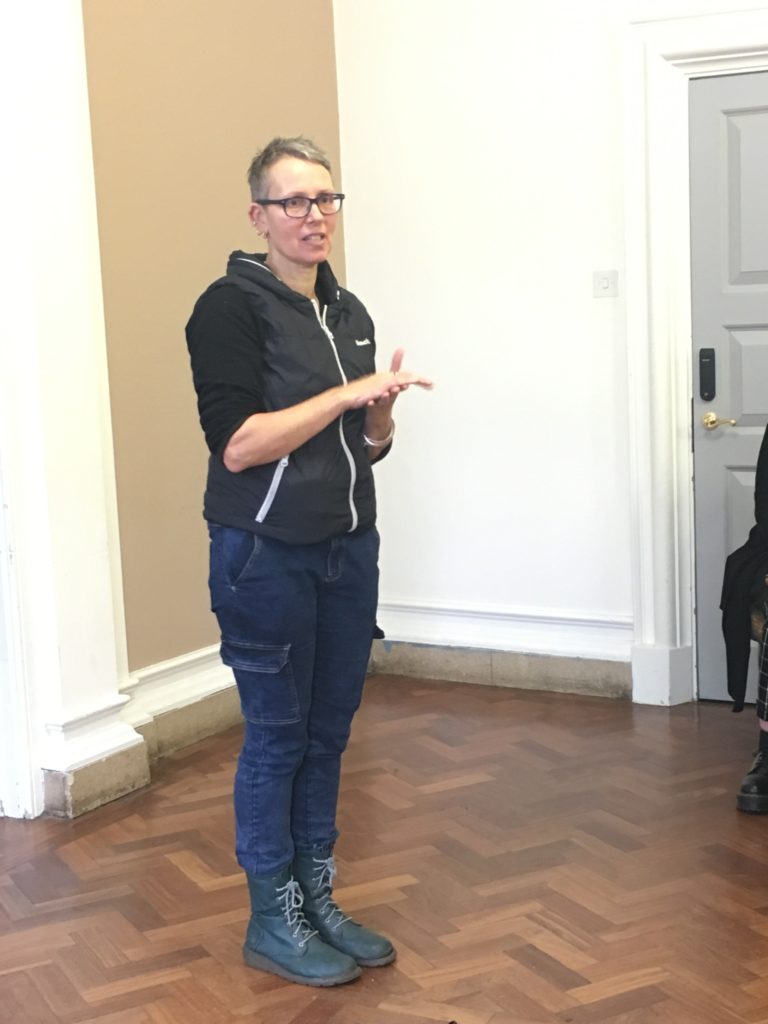
Lecturer and former youth worker Jayne Mugglestone from Manchester Metropolitan University talked next about working with her final year Early years and Childhood studies students to explore the WRAP data. Jayne reflected on how the creative and participatory methods used to work with the data had transformed the students’ understandings of research but also how she had been reminded herself about what was possible in a university classroom setting. From a predominantly South Asian backgrounds and living in Greater Manchester the young women Jayne works with had been fascinated both by the continuities over the thirty years (nothing has changed) but also positive changes such as the way social media facilitates community for those who might otherwise be isolated. The experience of being in a community of women, asking difficult questions about sex that spanned thirty years was a powerful experience for the group – opening up their understanding of well-being and the role of women’s spaces of inquiry in making this important work happen.
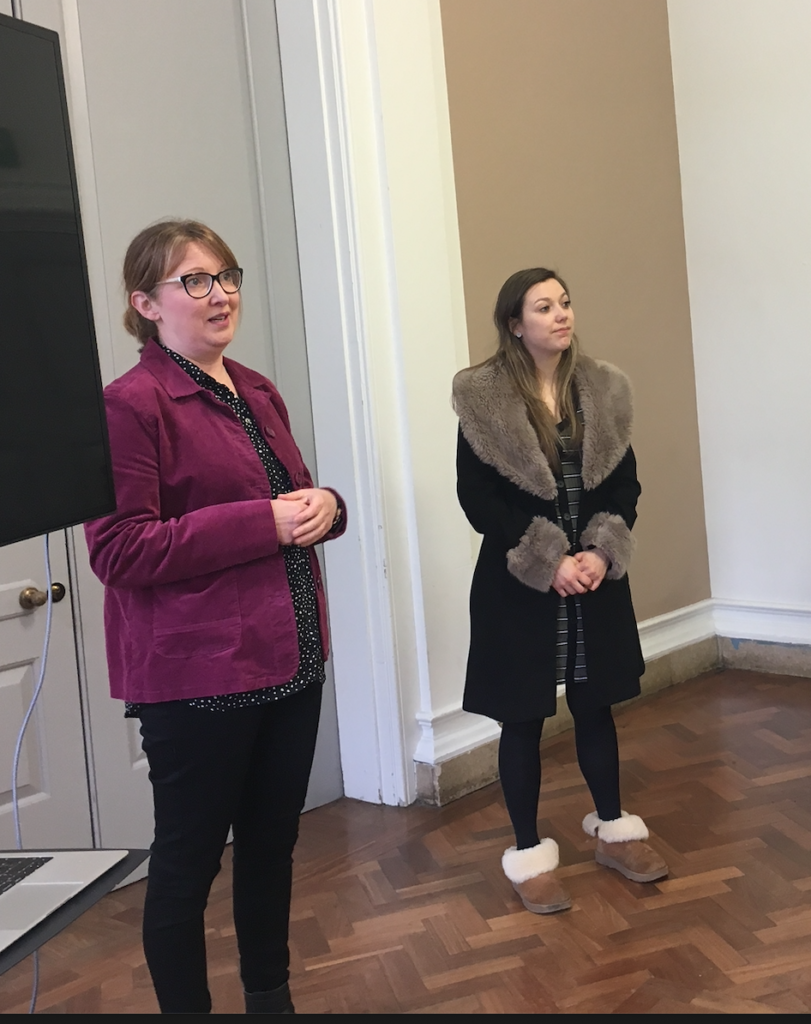
Next up was Claire Fox Reader in Educational Psychology at MMU and Charlotte Bagnall, PhD student and associate lecturer – who shared with the audience how they had worked with BSc Educational Psychology students to use two transcripts from the WRAP archive to teach qualitative research methods, including the coding and interpretation of qualitative data. The richness of the material meant that students could focus on just three pages each from two transcripts generating rich findings about the inadequacy of school sex education and the workings of an informal sexual culture characterised by a sexual double standard and governance by sexual reputation. Here is their blog about their experience of using the archive as a teaching resource in higher education(and how to make methods teaching lively, ‘experience-near’ and feminist!)
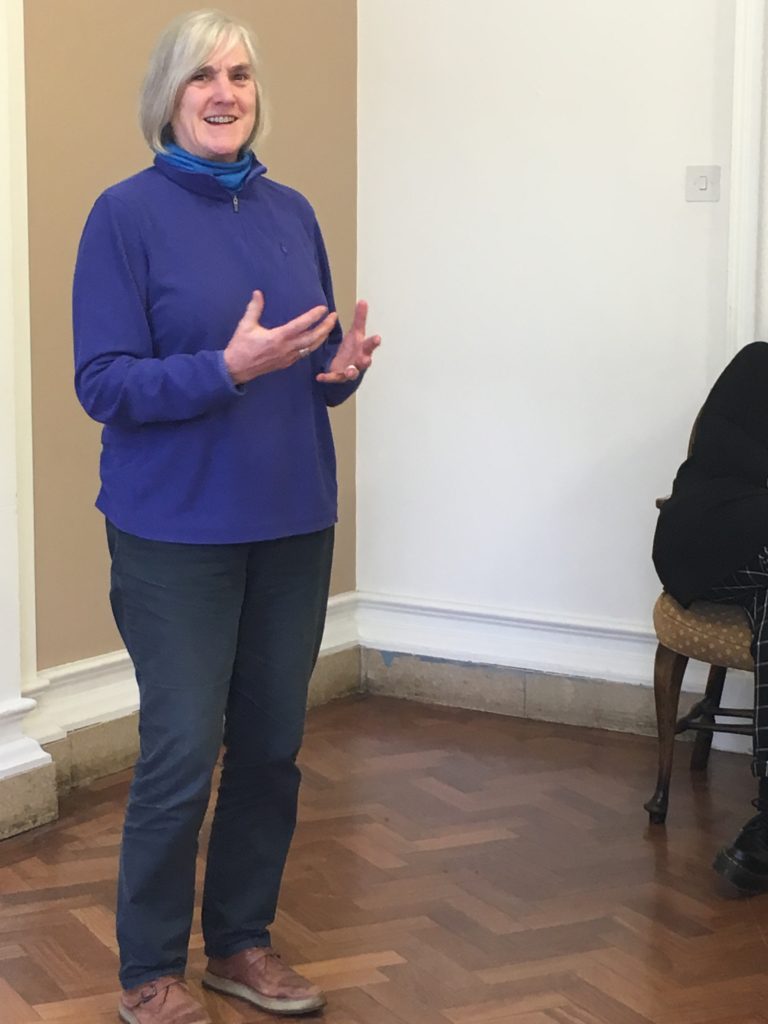
Ali Ronan who acted as the coordinator for the youth work projects thanked all the projects and shared her view that the work has only just begun.
The final part of the event involved sharing the archive that has now been formally published in the University of Sussex repository where it will be preserved. Rachel presented this and thanked Rosie Gahnstrom for the huge amount of work that she has been doing in anonymising and cataloguing the data set. Janet Holland and Robert Albury were also thanked for the tricky and time consuming work of freeing the original data from obsolete media and machines. The archive will also be available through our Omeka platform (FAYS) where we will be creating ‘exhibitions’ using material we have collected and generated over the course of the project. This will give potential users a taste of how the WRAP archive can be used and explored and will help build a community around the archive.
The archive has been reverse engineered, and Manchester has been put back into the material and made visible. The archive will also remain in Manchester and people were encouraged to use it.
Over the course of the project we have been exploring different versions of sharing and exploring and animating the archive, including the kinds of youth work and creative practice shared at this event. To conclude the event Rachel shared some initial reflections from another experiment we have been working on – the feminist chatbot. This has been developed in collaboration with a group of women learning to code at the University of Sussex as we explore new ways of asking questions directly of the archive. We introduced the room to the bot and asked everybody to write down one question they would like to ask of the archive. We tried one and the bot couldn’t answer, but we’ve kept their questions to help us understand what potential archive users might want a feminist chat bot to do and what future work might be done with the WRAP archive.
At this point the group went downstairs to the archives section of the library which was buzzing with people who had come for the International Women’s Day celebrations. Members of the public were invited to make their own felt square using material from the archive, an invitation that they responded to enthusiastically.
A huge thank you goes to Ester McGeeney who managed the reanimating work from a distance and planned and lead the day. An exhausting, exhilarating ending for an extraordinary project.


